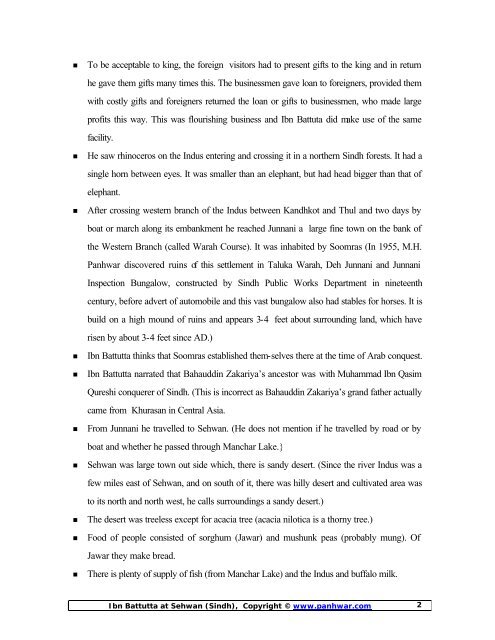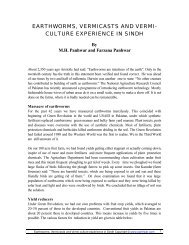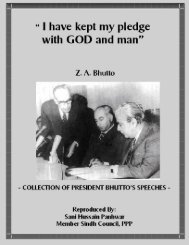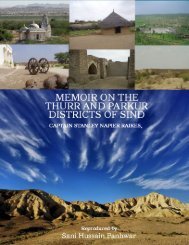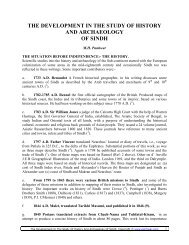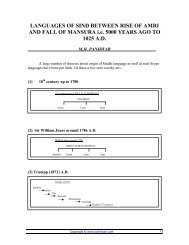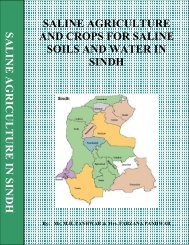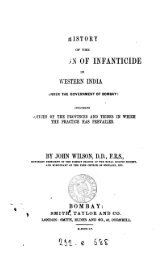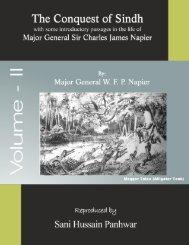IBN BATTUTTA AT SEHWAN (SINDH) - MH Panhwar
IBN BATTUTTA AT SEHWAN (SINDH) - MH Panhwar
IBN BATTUTTA AT SEHWAN (SINDH) - MH Panhwar
You also want an ePaper? Increase the reach of your titles
YUMPU automatically turns print PDFs into web optimized ePapers that Google loves.
To be acceptable to king, the foreign visitors had to present gifts to the king and in return<br />
he gave them gifts many times this. The businessmen gave loan to foreigners, provided them<br />
with costly gifts and foreigners returned the loan or gifts to businessmen, who made large<br />
profits this way. This was flourishing business and Ibn Battuta did make use of the same<br />
facility.<br />
He saw rhinoceros on the Indus entering and crossing it in a northern Sindh forests. It had a<br />
single horn between eyes. It was smaller than an elephant, but had head bigger than that of<br />
elephant.<br />
After crossing western branch of the Indus between Kandhkot and Thul and two days by<br />
boat or march along its embankment he reached Junnani a large fine town on the bank of<br />
the Western Branch (called Warah Course). It was inhabited by Soomras (In 1955, M.H.<br />
<strong>Panhwar</strong> discovered ruins of this settlement in Taluka Warah, Deh Junnani and Junnani<br />
Inspection Bungalow, constructed by Sindh Public Works Department in nineteenth<br />
century, before advert of automobile and this vast bungalow also had stables for horses. It is<br />
build on a high mound of ruins and appears 3-4 feet about surrounding land, which have<br />
risen by about 3-4 feet since AD.)<br />
Ibn Battutta thinks that Soomras established them-selves there at the time of Arab conquest.<br />
Ibn Battutta narrated that Bahauddin Zakariya’s ancestor was with Muhammad Ibn Qasim<br />
Qureshi conquerer of Sindh. (This is incorrect as Bahauddin Zakariya’s grand father actually<br />
came from Khurasan in Central Asia.<br />
From Junnani he travelled to Sehwan. (He does not mention if he travelled by road or by<br />
boat and whether he passed through Manchar Lake.}<br />
Sehwan was large town out side which, there is sandy desert. (Since the river Indus was a<br />
few miles east of Sehwan, and on south of it, there was hilly desert and cultivated area was<br />
to its north and north west, he calls surroundings a sandy desert.)<br />
The desert was treeless except for acacia tree (acacia nilotica is a thorny tree.)<br />
Food of people consisted of sorghum (Jawar) and mushunk peas (probably mung). Of<br />
Jawar they make bread.<br />
There is plenty of supply of fish (from Manchar Lake) and the Indus and buffalo milk.<br />
Ibn Battutta at Sehwan (Sindh), Copyright © www.panhwar.com<br />
2


